ARTISTS WHOM I CONSIDER AND RESEARCH
Artists I researched and were inspired by are Cy Twombly, John Ruskin, William Kentridge, Eva Hesse, Xiaojing Yan, Ian Kiaer, John Cage, Rodney Graham, Lynda Benglis, OCA-EU collaborating student group working as WWW, in particular Annette Holtkamp.
This list will grow or change as I work on my project, I see this very much as a living blog as I will continue to add artists whom I researched for this project, here. It became clear that contemporary artists who work around fungi will have a strong influence on my work, from a point of materiality and how they connect with the subject.
Cy Twombly (1921-2011)
For his work on mushrooms – I looked at the Tate website where I found some of his prints and drawings. Employing a mixed media technique, each print varies in its use of lithographs and grano-lithographs, collotype on Fabriano paper, semi-transparent tracing paper, photochromic with collage, and Twombly’s own drawing. I have always been interested in developing my skills as a printer and using it as an opportunity to develop work. Twombly combines botanical illustrations and scientific text with his own artistic and instinctive gestures and continues by merging logical thought with a creative endeavour. Sequential in nature, the exhibition presents the complete two series’ as the artist intended, therefore ensuring the narrative of each is not disrupted. What I think draws me to his work is that the artist explores, and applies looseness, (instinctive gestures?) and a mixture of lines and collage. I also like the sketchbook nature of these works, as well as that they show research and thinking, and making. I like how this work functions as a way the artist reveals how he thought about and understood the natural world.
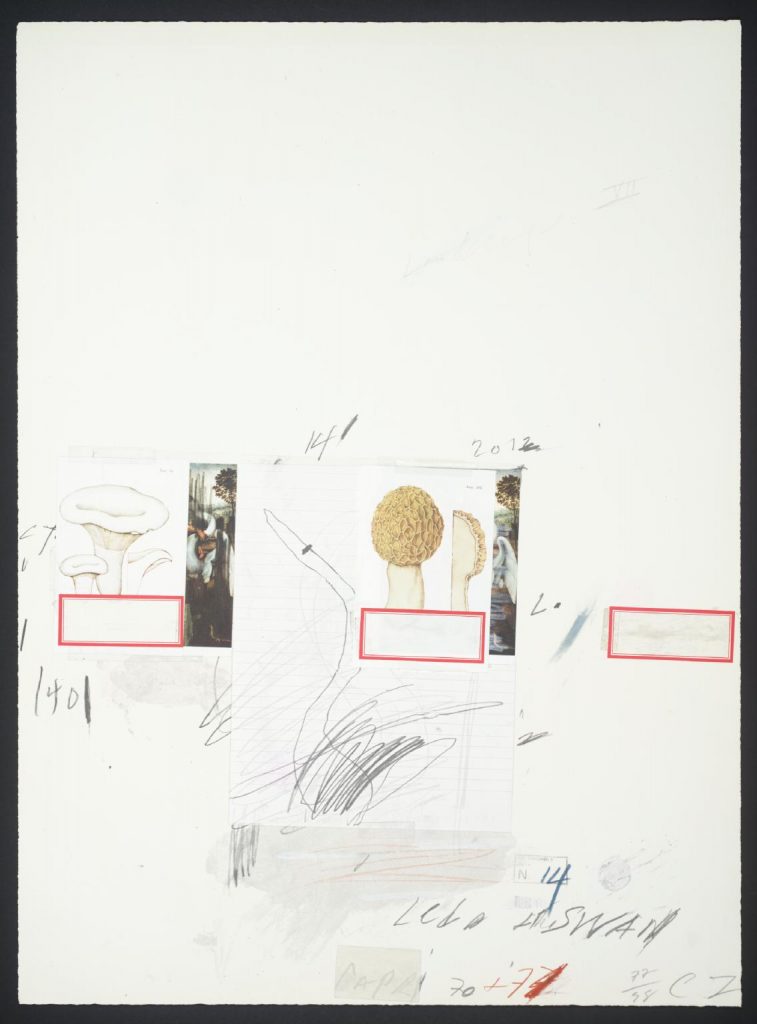
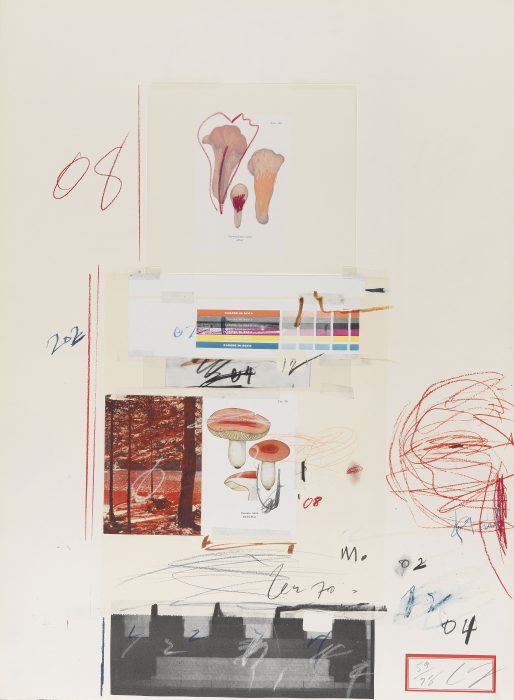
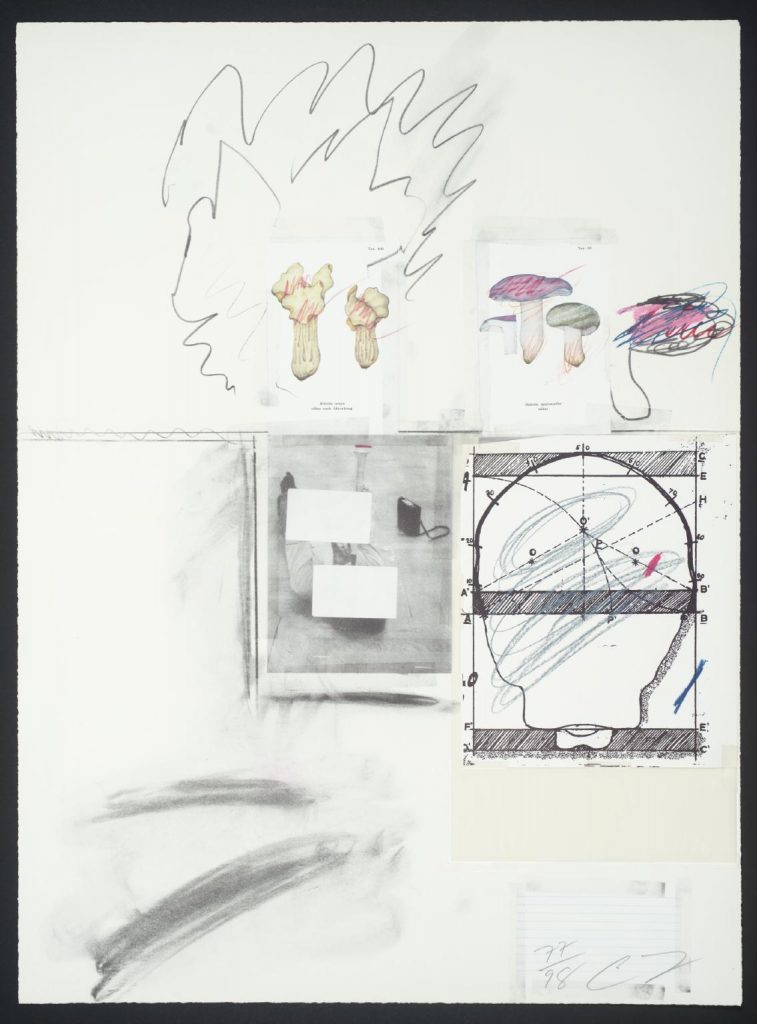
In Cy Twombly’s Natural History, Mushrooms – Plate I, one is confronted with ‘combines’ reminiscent of the technique of Robert Rauschenberg’s Factum canvases, and the work I have covered in part two of the course. This collage and hand-painted work were created in 1974 as part of a limited edition of 116. It is a hand-signed lithograph. The title Natural History was adopted by Twombly from an early scientific encyclopedia by the Roman Pliny the Elder. Natural History Part I (Mushrooms) was the first of two portfolios; the other was subtitled Some Trees of Italy.
On the website of the Bastian Gallery, I read the following: “Twombly’s portfolios directly reference the Roman author and commander Pliny the Elder’s Natural History (Naturalis Historia), a theoretical text on the natural world published in 77-79 AD. Positioning nature as a divine entity that has an interdisciplinary link to art, the encyclopedic book was one of the most impressive works to survive the Roman Empire.” (https://www.bastian-gallery.com/en/exhibitions/cy-twombly-natural-history/). Many of Cy Twombly’s paintings and drawings include handwritten words and phrases—naming or quoting poets ranging from Sappho, Homer, and Virgil to Mallarmé, Rilke, and Cavafy. Enigmatic and sometimes hard to decipher, these inscriptions are a distinctive feature of his work. I do like the idea of logical thought mixed with creativity and almost critiquing our need to classify and use hierarchies. The collages look as if it was torn, not neatly cut out. Now I understand that Twombly used a quasi-scientific presentation of different lithographic images, combining them with collaged sheets of collotype and semi-transparent tracing paper and photographs. The works can be seen as using a mixed media technique. These are enhanced with drawings in his characteristic expressive graphic, but here it becomes a very cryptic language, which becomes part of an artistic expression of the concept ‘mushroom’. Below is a start to my own explorations, inspired by Twombly. I used canvas paper and primed it with acrylic paint. I am captivated by one type of mushroom, mainly because of this connection of its form with mycelium – the idea of netlike fabric, and this is the Phallus indisiatus, the Veiled mushroom
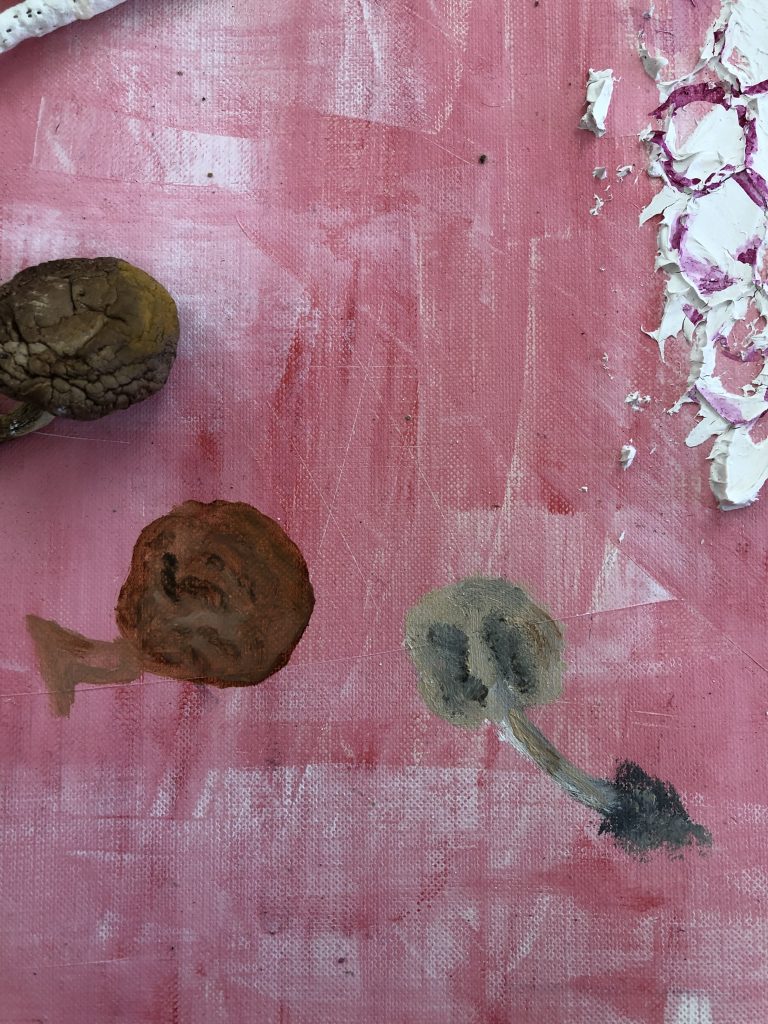
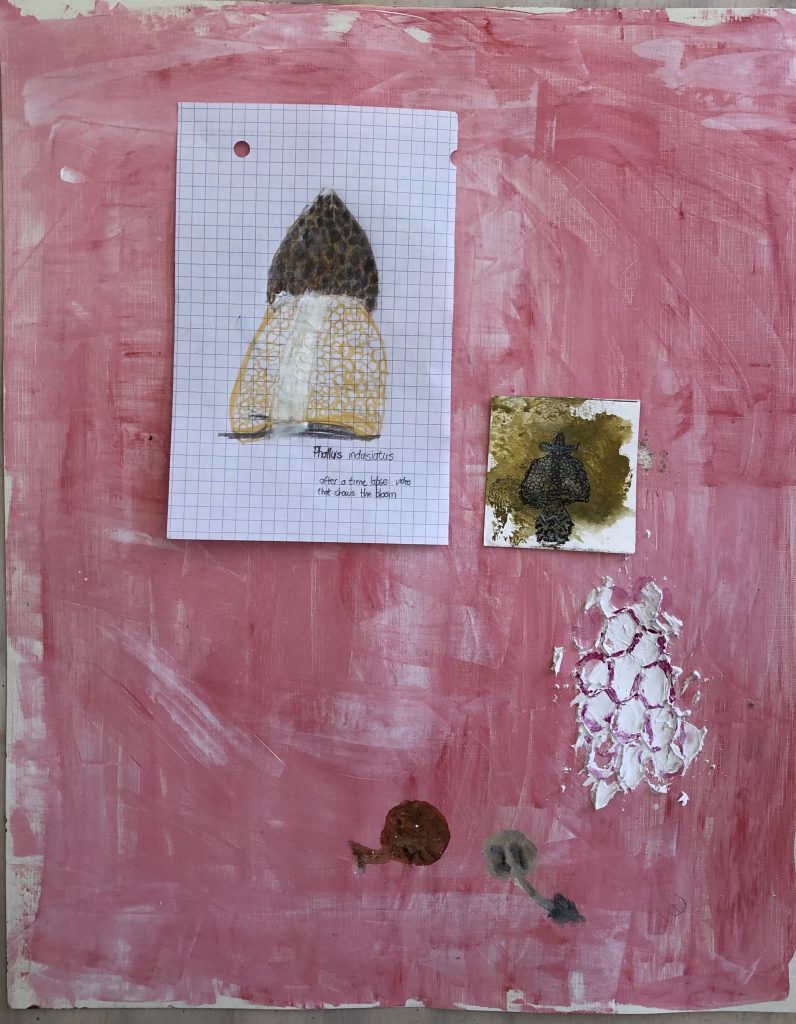
I learned that Twombly had done away with painting a representational subject matter, the line or smudge became his subject, and each mark should be seen with its own history, as its own subject. Later, many of his paintings and works on the paper move into “romantic symbolism”, and here titles can be visually interpreted through shapes and forms, and words. Twombly often quoted the poet Stéphane Mallarme as well as made use of countless myths and allegories. This learning also applies to later in the course materials when I work with text. For me, Twombly blurred the line between drawing and painting – and helped me to connect with my interest in natural sciences, plants, and even how they are drawn/painted for archives. It reminds me of how Curiosity Cabinets (I looked into that during UVC2, see blog on the website)came to use/fashion and of my fascination with things natural. I enjoy walking and finding objects that find their way into my studio during these walks.
I later discovered that I would like to work with deconstructing as a theme in my work and was thinking about using prints of works of Cy Twombly and combining or reconstructing it with my own work as a form of collage or appropriation. (I was influenced by the work of Sharon Kivland and thinking in terms of understanding what was the thinking behind the making.)
I later learn more about this Treatise on the Veil and it informs a lot of my making in Part Four of this project.
List of illustrations
Fig. 1 Twombly, Cy. (1974) Natural History No I [Photograph of lithograph on paper] At:
Fig. 2 Twombly, Cy. (1974) Natural History Part One No V [Photograph of lithograph on paper]At: http://www.tate.org.uk/art/work/P07573 (Accessed on 12/09/2021)
Fig. 3 Twombly, Cy. (1974) Natural History No II [Photograph of lithograph on paper] At: http://www.tate.org.uk/art/work/P07573 (Accessed on 12/09/2021)
Bibliography
Cy Twombly (https://www.bastian-gallery.com/en/exhibitions/cy-twombly-natural-history/).
Andy Warhol:
After I looked at psychedelic drugs I realised that this artist’s work came to light during an era of pop culture craze and experimental drug use. His pop perspective blurred the lines between the gallery and nightlife scenes. I like his series of endangered animals, where he used photographs from the Endangered Species series. (D James Dee/© 2014 The Andy Warhol Foundation of the Visual Arts, Inc/Ronald Feldman Fine Arts, New York/Artists Rights Society (ARS), New York and DACS, London Psychedelic)
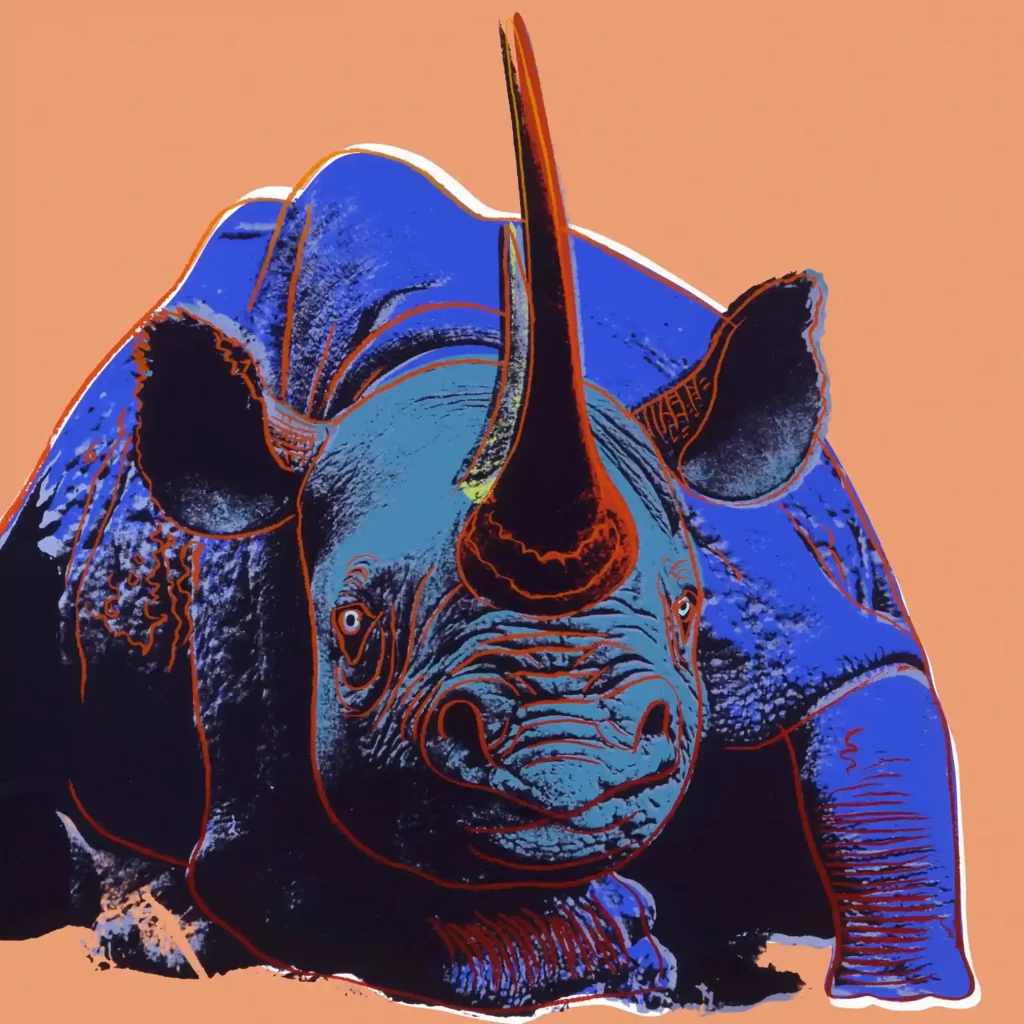
Eat is filmed in black-and-white film, has no soundtrack, and depicts fellow pop artist Indiana engaged in the process of eating a mushroom for the entire length of the film. Finally, there is a brief appearance by a cat. Eat (1963) is a film created by Andy Warhol and featuring painter Robert Indiana, filmed on Sunday, February 2, 1964, in Indiana’s studio. The film was first shown by Jonas Mekas on July 16, 1964, at the Washington Square Gallery at 530 West Broadway.
https://youtu.be/InxzsS1JOcA?t=2
On the night before appearing in Warhol’s film, Indiana had seen the film Tom Jones. Inspired by the movie’s “orgiastic eating scene,” he had starved himself before the filming, bringing along a large number of fruits and vegetables to eat. Warhol asked him to slowly eat just one mushroom. This film was shot using nine 3-minute rolls of film. Warhol then assembled it out of sequence so that there is no direct relation between the time spent eating the mushroom and how much of it is left. The film is about watching somebody eat. How much is actually eaten at any one point in time is irrelevant. The focus is on the image and not the narrative. I look at Warhol’s work in Pop Art for the use of series and colour. in the course material and work to be made.
John Cage:
I think the “turn to mushrooms” phase in Cage’s career has many parallels with the evolving dynamic of the aesthetic of silence. From a biographical standpoint, Cage’s move to Stony Point provided a bit of psychological relief after years of city dwelling, and his early interactions with the forest surrounding his infamous glasshouse built by architect Paul Williams (about which Branden Joseph has written several brilliant commentaries on themes of transparency) brought about situational awareness, not unlike the anechoic chamber experience. Cage could have focused on other aspects of nature, but there is something unique and elusive about mushrooms. As one who has spent a considerable amount of time in the many wilderness areas of California and the other great National Parks in this country, I can attest to the striking presence of mushrooms wherever you wander. Fungi, remember, are a separate kingdom of organisms, and contain an incredible species diversity (some estimates are around 1.5 million unique kinds). Elusive and mysterious, fungi provide a perfect metaphor for otherness in Cage’s artistic program. After foraging and studying mushrooms for some time, Cage quickly absorbed the extensive taxonomic collections known as “field companions,” hence the essay title, and he soon developed an encyclopedic knowledge of common species.
I Read a blog posted on 21st February 2012 by Richard H Brown. http://www.ayearfrommonday.com/2012/02/music-lovers-field-companion-1954.html
Eva Hesse
My tutor suggested I look at the work of this artist, especially her drawings for her sculptures. What I soon learn is that she was working from a strong material-based idea. I found a book with work on SCRIBD, Eva Hesse, Spectres, 1960, edited by Luanne McKinnon, and also listened to a talk on YouTube by Lucy Lippard.
I spent time viewing her repeated semi-spheres, single or double, the broken sausage or phallus, and the doughnut shape (total zero). . Looking at the shapes I am making with the expansion foam, they are very similar to the above artist’s work. I think it flows naturally because I do not adhere to a strict mould. Look at Hesse and Bourgeous sharing a deep female malaise
Xiaojing Yan
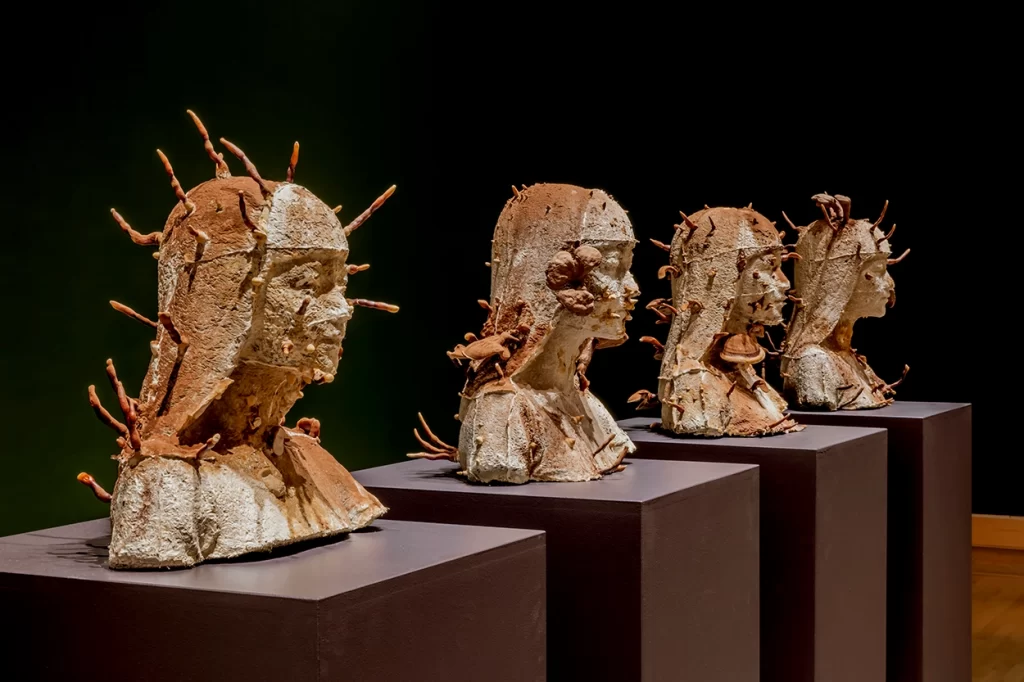
This artist works with mushrooms to create 3d works and installations which show the mushroom growing. She cultivates lingzhi mushrooms and uses the spoor to paint with. The figures are composed of lingzhi, which was encouraged to grow in moulds. She then allowed continuing growth until it produced spores that create not only extruding fungi but also the brown powder that is slowly engulfing each piece. Her work is very inspirational and I would like to continue in my making by exploring her ideas.
I became interested in how the moulds could be developed and learned that one would have to create them in clay and then cast them into plaster. I would also consider using paper (cellulose) or woodchips after I learn that this is food for the mycelium. I can imagine that one could then innoculate the spores of mushrooms or use dowels to insert them. Obviously one will have to keep this damp and in the dark, for the mycelium to grow and flower into mushrooms. I would like to use oyster mushrooms for such a project. I became inspired to look at other 3d objects, like making a hand or hands and using the black dress I used in the course material as objects onto which I could grow living mushrooms. In July 2022 I started experimenting with growing mycelium in the paper as a way to consider making 3d objects.
Later I found more about her making process in a conversation with Margaret Rodgers, (2017) of the Canadian Art Magazine:
When I create my lingzhi sculptures, I first put woodchips and lingzhi spore mixtures into the mold I create. Then, by controlling humidity, temperature, and light, lingzhi mycelium starts to grow. Once the lingzhi mycelium binds the wood chips into the mold’s shape, I remove the mold and put the bonded mixture into a small greenhouse to let it keep growing. After a few weeks, the body of the roots begins to grow and creates its own transformative sculpture. The beginning of this hybrid science/art/idiosyncratic/secular experiment satisfies me. I am no longer in control, nature is. For me, it’s important that each side of this equation has a chance to shine.
Maurizio Montalti
This artist and designer observed the formation of a translucent/transparent mycelium bearing resemblances with the human skin. Looking at this as a reflection of the cycles of growth and decay and the durability of objects, it became very much work about our own identity. He uses the decomposing potential of fungi to look at physical decay and physical death.
In his work, Continuous Bodies, which is an installation of different works – he creates a series which is divided into Bodies of Change and The Ephemeral Icon. In the Mycelium Shroud, the image below, he uses a handmade felt shroud inoculated with the mycelia from the species Schizophyllum commune to challenge traditional burial practices. Through this process, he also demystifies the feelings of denial and anxiety which are related. to the loss of a beloved one as he transports the process of decomposition of human remains to a more natural level which is ecological and part of a cyclical re-connection with our changing environment.
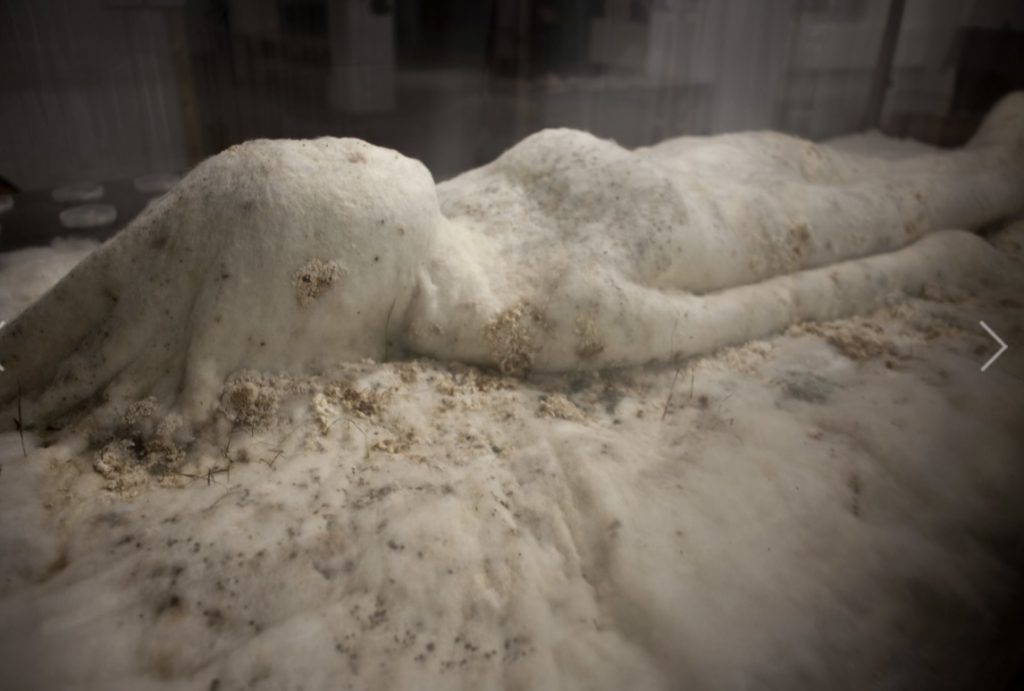
In the other work, Ephemeral Icon, he works with a plastic chair. The project is subtitled Infusing life with fungi to trigger a process of final dissolution, starting from the plastic-degrading property of Phanerochaete chrysosporium, to synthetic and toxic materials that do not naturally decompose. He criticizes the enormity of waste we produce by increasingly relying on disposable objects. The work criticises the economic systems as well. He uses a plastic chair as a symbol of this modern culture, the artist documents the catalysis of its dissolution by upholstering it with fungal mycelium, answering the thought-provoking question “…why should not a plastic chair dress up for death?” He worked collaboratively with mycologists to create this body of work.
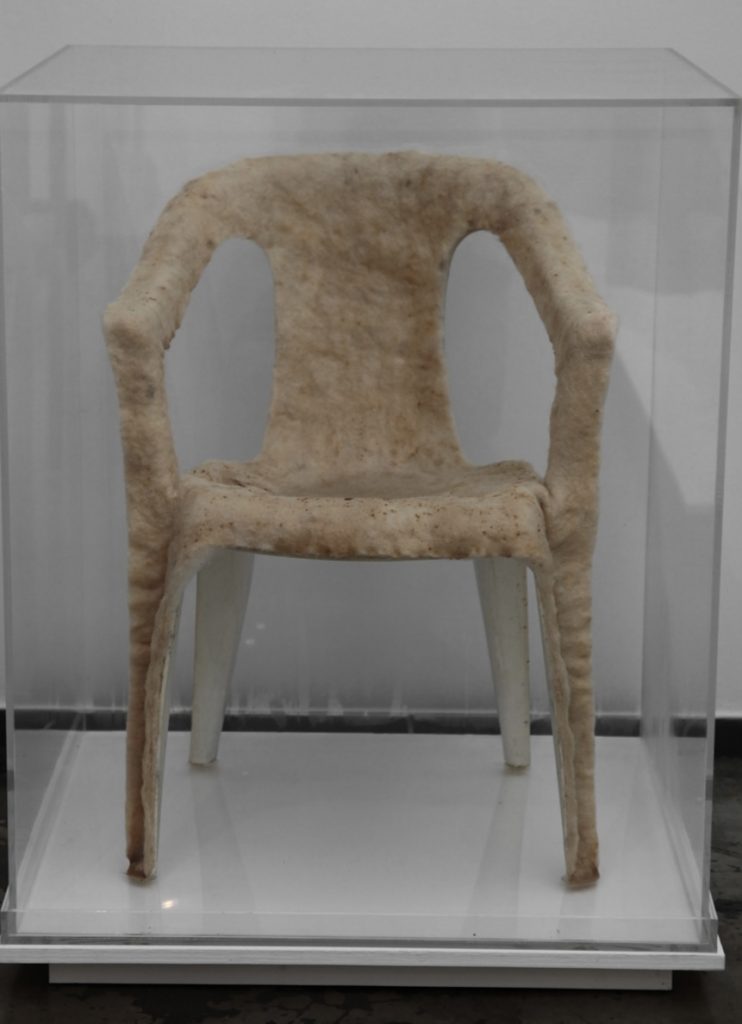
Diana Scherer
This visual artist is living and working in Amsterdam. Her practice encompasses botany, photography and sculpture and she explores the relationship between man versus his natural environment. Her installation work becomes great questions about the boundaries between plant culture and nature. She makes her viewer consider meanings around “natural”, and if a man is not also nature or a parasitic species on the rest of his environment.
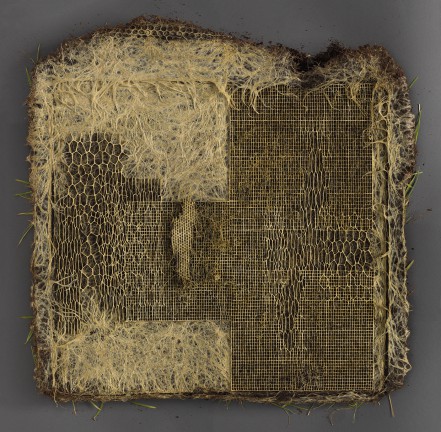
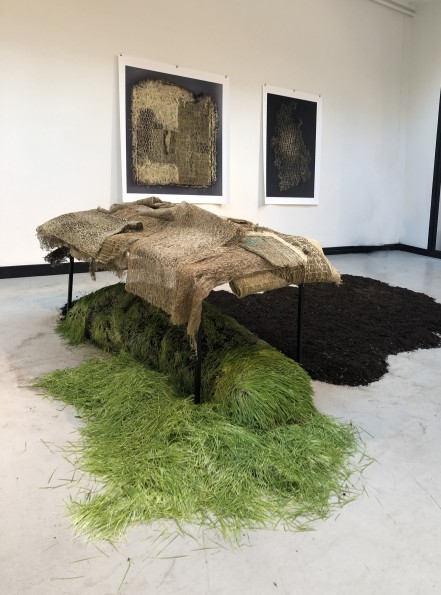
For the past few years, her fascination has been focused on the dynamics of underground plant parts. She has been captivated by the root system, with its hidden, underground processes. Her long-term project InterWoven originated as an art project with an intuitive approach and has also developed into innovative material research. To develop this work she collaborated with biologists and engineers, and together a new technique InterWoven was developed as innovative research in growing plant root textiles. I follow her on IG, and she became a strong influence in my making as I see the connection with nature in her work as a form of collaboration and investigation. Ideas to re-use fabric (the black dress I used in the course as a prop) began developing under her influence. I hope to continue this idea in my ongoing studies, as I get to understand the process of inoculating fungi spores onto a medium, and hopefully develop something with the black dress.
Chiharu Shiota
As my work developed and my thoughts became more abstract or linked with mycelium, I looked more at the installation work made by this artist. I have been following this artist on IG for a long period and her work is always fresh and inspiring to me. I like how she uses thread to draw in space – to me the work becomes 3D drawings. I also admire her for using art mainly as expression and how performances followed her process. I enjoyed her ideas of thinking about ‘absence’ in existence, and that there is space created within her works, where it seems no one exists. Ideas of using my black dress from earlier in the course are being contemplated as a work to be developed as an installation or even a performance. I could use thread that acts as mycelium and keep the dress in suspension. The dress will become a stand-in or a body with nobody. I learn that as a material thread gets tangled, it can break, it can keep things together, which is also a metaphor for our human relations. It can also become something about living and dying – so much of what I learn from the fungal world.
.
Daro Montag
This artist creates art using a variety of living organisms. His works will include microbes, plants, toads, and worms. I looked at his series, Bioglyphs, which shows works created by placing fruit on film and allowing it to be consumed by microorganisms before producing prints from the film. The work is a living matter.
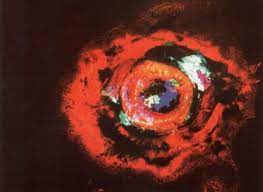
I found the following statement by the artist profound ( Artist’s statement initially published in Sci-Art catalogue, 1998).
this art does not portray objects or entities – it discloses events
it is not concerned with classification but with revelation
the method uses film but not a camera
it is not optical but physical
the black film is loaded with colour
waiting to be released
the creativity of this project does not reside solely with the artist
it also includes countless micro-organisms
the art is in the performance of these subjects
their play of interaction leaves an indexical trace
this work is made by a range of biological activities
these include eating, defecating, wriggling, procreating
when carried out by micro-organisms these activities are commonly known
as decomposition
in exposing film to such activity
the art realises the creative potential of decay
it is composition by decomposition
everything is in the process of becoming something else
creativity is the natural state of living matter
living matter is the embodiment of creativity
this art makes visible the unseen events of the micro-organic world
the insignificant is brought into signification
in a universe in which all things are connected
it is a celebration of cosmos.
Vivian Sassen
This Amsterdam-based artist/photographer and known for her abstracted use of the female form, geometric shapes, and strange, conceptual still lives. I found her series 2017 Of Mud and Lotus, which is themed around collage and mixed media applications of photography. Organic and manmade materials are juxtaposed against natural forms and the artist’s added use of paint. Femininity and fertility are present tropes, and several pieces feature different species of mushrooms paired with female figures and leafy sprigs of flora. The mushroom’s nuance as a symbol of both fecundity and decomposition compliment the overarching theme of rebirth – spores and toadstools interrupt human bodies and announce themselves loudly against paler pigments and contrary textures.
Celia de Villiers
This local artist inspired me during the last few months of viewing her work on IG. By reading about her I discover that she lives near a forest area and during the covid lockdown, a period described her connection with mushrooms as an imaginative 2-year journey. Finding an abandoned mattress was an inspiration for a sculptural work which I really appreciate. She called the work a fungus fantasy and used the innerspring mattress to add more reclaimed and biodegradable textiles and waste and says that it was inspired by the Conk or shelf fungus/bracket mushroom, which is primarily a decomposer. The work is 2m in length, 150cm in width and around 110cm high. One could see it as a deconstructed double-bed mattress.
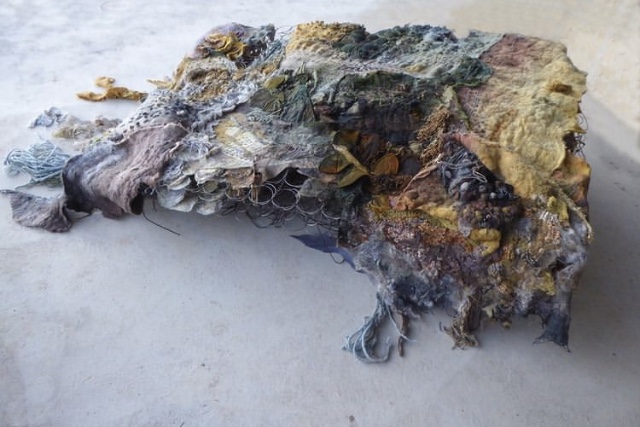
She makes use of textiles in her work, like felting, knitting and embroidery. In the above work, she used vintage tablecloths, sheets, dishtowels, handwoven mohair curtains, which were already moth-eaten, and donated wool, yarn and fabric scraps she had in her studio from previous works. The work is carefully put together, as an artist who wrote that she is mindful of edges I want to show viewers her work by juxtaposing excellent crafting with parts in the work that she says are ‘seemingly laxi-daisycal’ (IG post @celiadevilliers) I learned that she uses eco dying and botanic printing in many of her work processes. As an artist and academic she has a long-standing interest in bio-engineering and saw this object (mattress) as her conceptual link to inventing the above work. I like the following statement she wrote about her work: “De Villiers says, ‘Art is a conversation, an experiment between the spiritual and the physical. But it’s not like science. It is more philosophical, like alchemy. The accidents, the imperfections – slashes and stains – speak of human frailty, and the vulnerability of the body in performance.’” (http://www.fibreworksart.com/de%20Villiers.html)
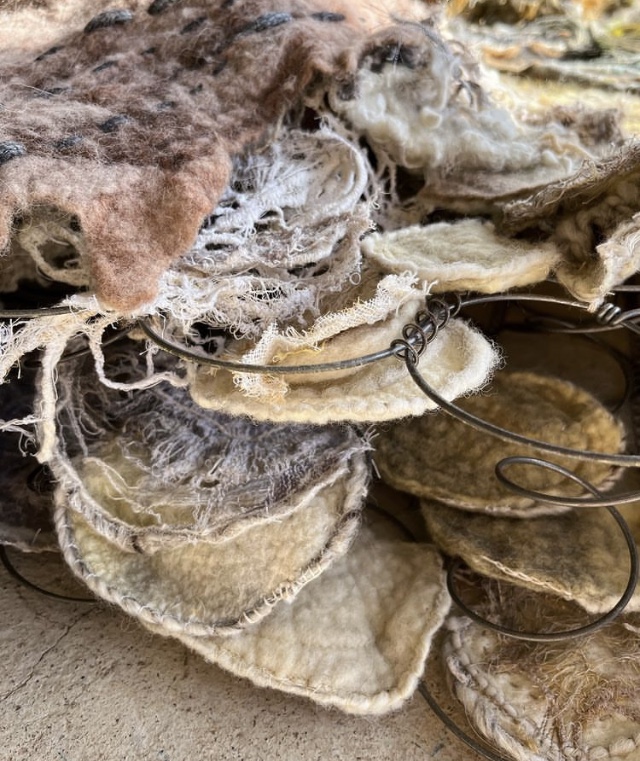
Dylan Lewis (1964-)
In August 2022 I had the opportunity to visit this local artist, (who is also internationally known), a sculpture garden in a town not far from where I live. This artist was raised in an artistic family; his father was an accomplished sculptor and his mom and grandmother were painters. The garden was created with his own intuitive design ideas, showing a lot of influence in terms of the design of the Japanese wabi-sabi aesthetic. It is full of curves, ellipses and indigenous plants and trees from the minimalist backbone of it. I know that this artist has a fascination with wilderness and how we as humans have to find our place in between. Lewis believes we have to connect with nature in order to find our inner wild self, a Jungian notion.

I share my experience with his work here because I felt it reminded me of my own inner search to connect with nature. I was emotionally touched by the moment I arrived at this 7-hectare garden, which is contoured and grouped with indigenous plants (fynbos) trees, water features (spring-fed ponds, a lake, streams) and at least 80 sculptures. ( I learn from the accompanying map that some of the plant species he has planted here, Erica verticillata, have already become extinct in nature). It felt like every bend or contour in this garden was considered for the viewer to experience and view the sculptures in a very natural environment. I was confronted with what it revealed to me in terms of how we have impacted the natural environment and how we hide (deny or remove ourselves from) this devastation with the beauty we create by developing our economies, land and environment, in a smaller sense by gardening in my own little space… maybe just trying to connect with the nature we are loosing more and more. I felt I did get the feeling of ‘nature within’ when walking here between more than 60 sculptures., and realising how amazing this plan came together over many years of intuitive labour and vision.
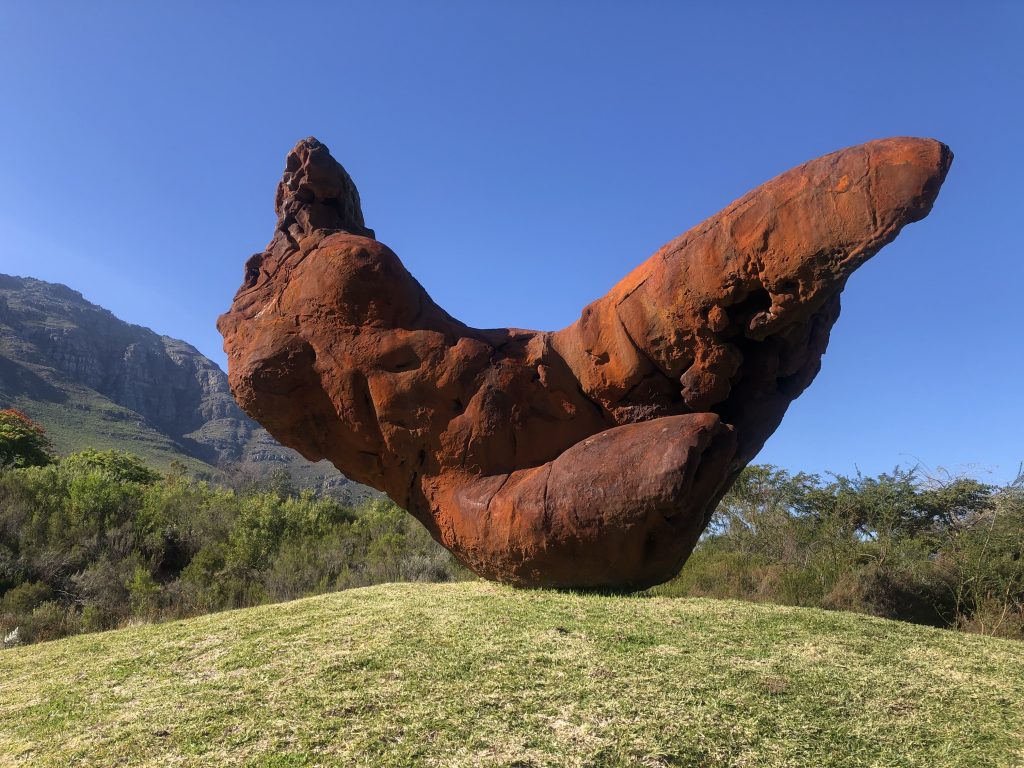
The original studio is now a gallery. The above image is a monumental size torso. I learn that the inside is made of foam and the exterior is acrylic plaster mixed with iron oxide. It looks like a rock between the grasses where it is located. I looked at this work within the garden and its environment, and think there is a balance between landscape and scale. I wonder about when work does disturb and the fine balance the artist have to find when placing work in any space. I have known the artist through his work with the big cats (Leopard, Lions, Cheetas) and could whilst walking imagine a time when they were roaming here. This was in a way scary as being confronted with the animal sculptures one experiences the raw wildness and one’s vulnerability. I also felt confronted with the loss of wilderness in my own country, and grateful for a place like this that can pose these questions. I thought about how I experienced the human body sculptures, which are mostly without faces and unfinished in terms of arms/legs, reminding me of the works, of Michelangelo and Rodin. I see them as a celebration of form; is the artist saying something about being non-judgemental? Later when I read how he thinks about it, I could understand some of the emotions of sadness that overwhelmed me: ” …prefers to express visceral, primal emotions through the body rather than the face. …..Dylan has explored the fragmented form of an ever-increasing scale, culminating in monumental human and animal torsos.” ((Dylan Lewis Sculpture Garden map)
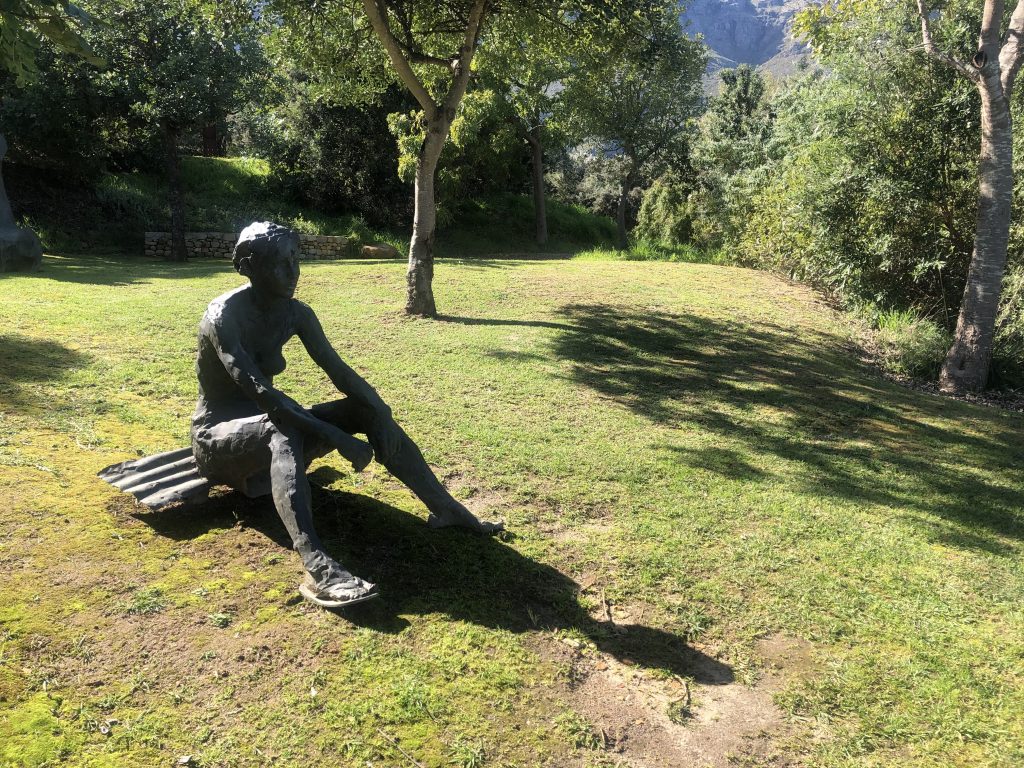
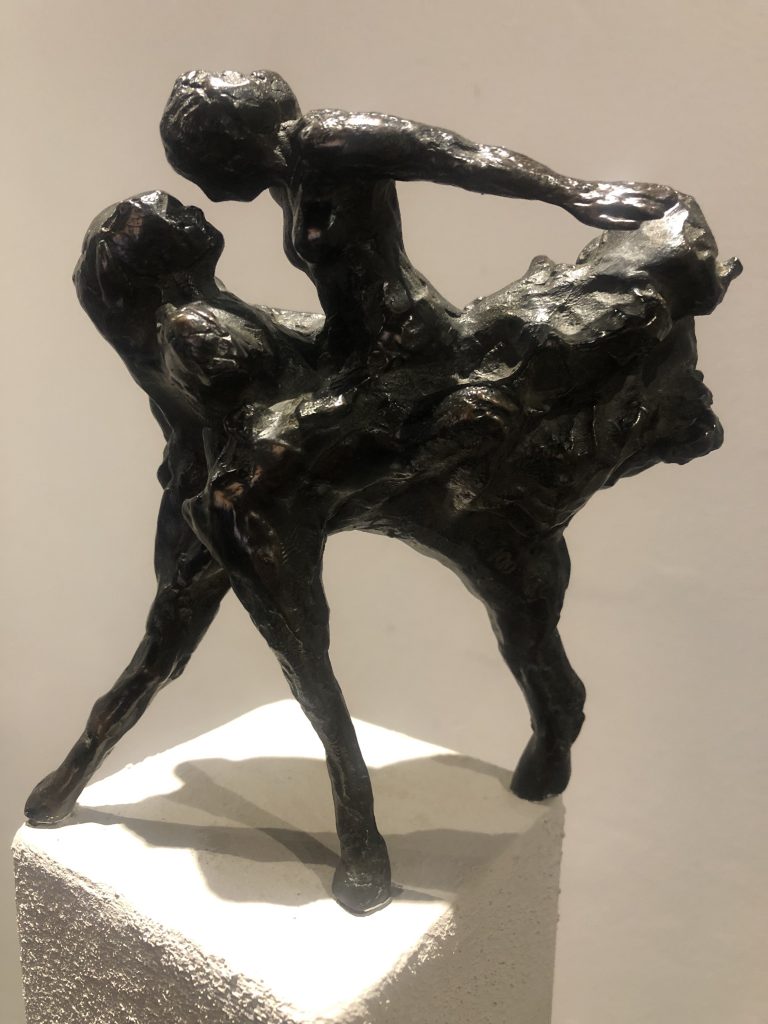
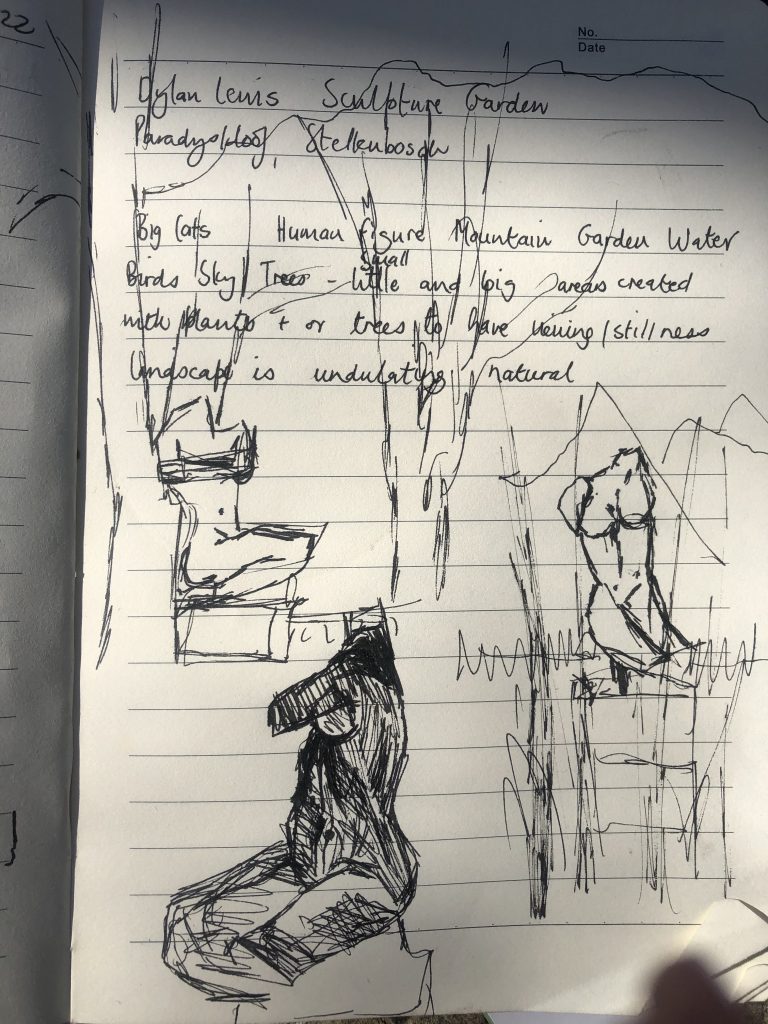
RANA BEGUM (b 1977)
I know the work of this artist firstly for her printmaking, but her creative practice most of the time blurs the boundaries between sculpture, painting and printmaking. She is very interested in light, form and colour. I also relate to her work in terms of her use of repetition through the use of grids and the acknowledgement of unpredictability or loss of control.
In the work below the artist worked with powder coated galvanised mild steel.
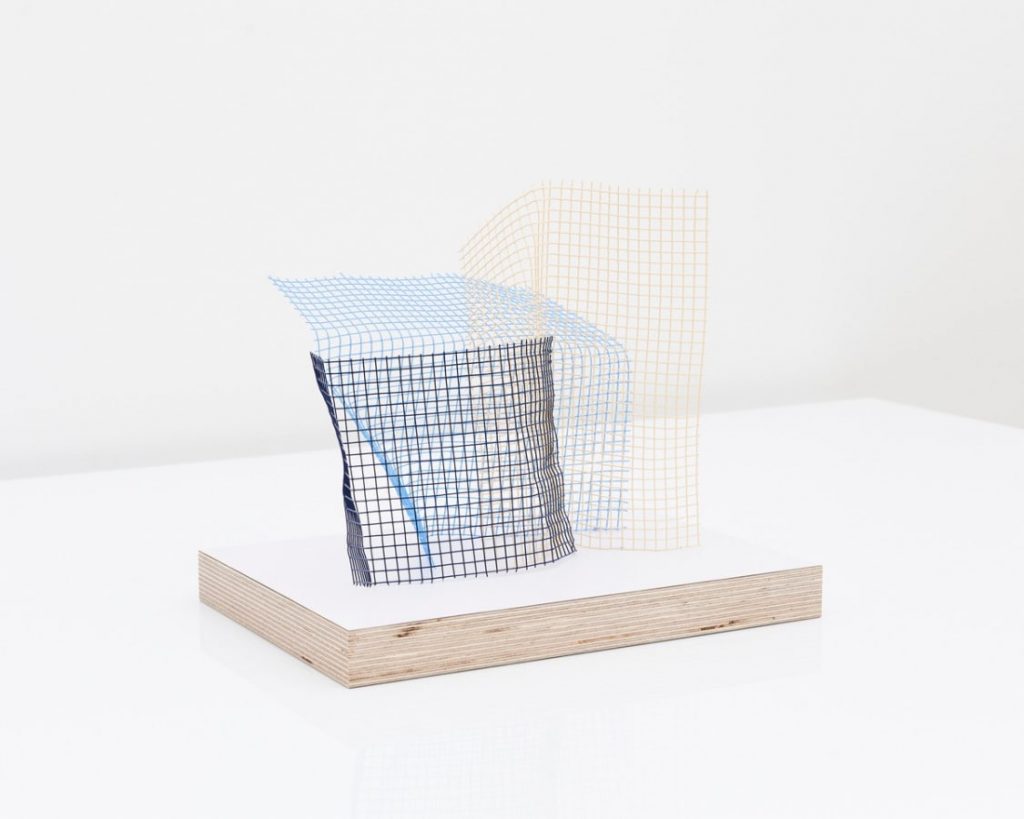
List of Illustrations
Montag, Daro, 1998 Bibliographs [photo image] Accessed online at: https://land2.leeds.ac.uk/people/montag/
Bibliography